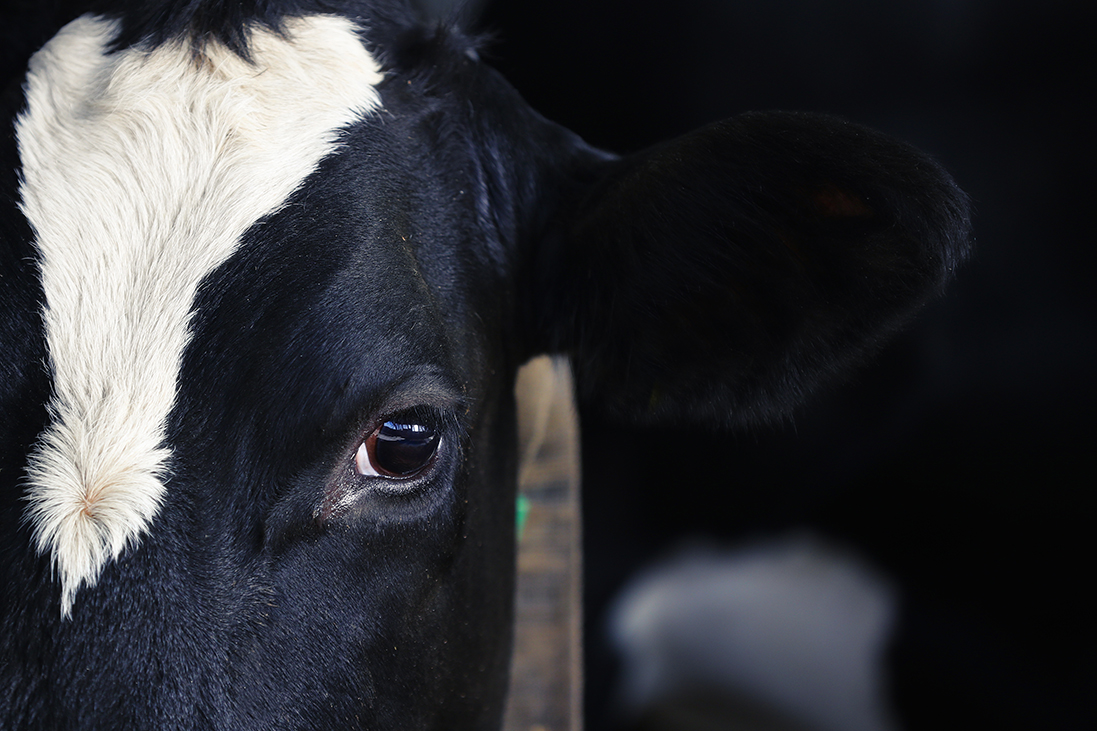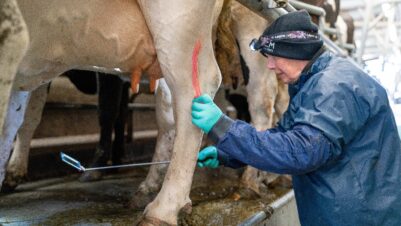Pyelonephritis is an infection of the kidney(s) and represents the most common kidney disease in cattle. More specifically, pyelonephritis is an inflammation of the renal pelvis (“pyelo” means “renal pelvis”) and renal parenchyma in affected animals (Rosenbaum et al., 2005).
Urethritis and cystitis can often be present simultaneously with pyelonephritis (Rosenbaum et al., 2005). This is because pyelonephritis usually develops from an ascending infection of the lower urinary tract in cattle. Bacteria can also ascend into the kidney through static urine. A common cause of urine stasis is swelling of the ureters due to inflammation (Radostits et al., 2007).
Less commonly, pyelonephritis develops through the spread of nephritis caused by emboli of haematological origin, or secondary to anatomical abnormalities of the kidneys or distal structures.
Main causes of pyelonephritis
The most common cause of pyelonephritis used to be the Corynebacterium renale bacterium (which causes contagious bovine pyelonephritis), but nowadays, Escherichia coli is more commonly isolated (Radostits et al., 2007).
The spread of [the bovine pyelonephritis] infection and disease takes place as a result of trauma due to, for example, calving, breeding or catheterisation
Contagious bovine pyelonephritis is spread via bacteria (C. renale) present in the vagina of either diseased or carrier animals. The spread of infection and disease is a result of trauma due to, for example, calving, breeding or catheterisation (Radostits et al., 2007). Even though C. renale is contagious and a reproductive disease, it tends to occur only sporadically, even in herds with many carriers of the bacterium.
Adult animals are more susceptible to pyelonephritis than youngstock, and cows are far more likely to be affected than bulls. It is important to keep in mind that venereal spread of C. renale can occur when a bull is affected (Radostits et al., 2007).
Diagnosis
Examination of the bovine’s urine, rectal palpation, ultrasound and biochemistry can all help achieve an accurate diagnosis. However, diagnosis of pyelonephritis is not always straightforward. The history of its clinical signs can be variable and include vague symptoms such as decreased milk yield, fluctuating rectal temperatures, mild to acute colic, changes in appetite and a loss of condition. Some affected animals strain and urinate frequently and show clear changes in their urine. Urine can be bloodstained and contain debris, mucus and/or pus (Radostits et al., 2007).
Urine collection in cows
A cow can be stimulated to urinate by rubbing the perineal area between the vulva and the udder, and a free-flow sample can be obtained by this method. When this does not work, catheterisation of the bladder with a metal catheter can be done to get a urine sample. When a cow is straining and urinating frequently, it can be difficult to obtain a urine sample due to the small amount of urine present in the bladder.
Palpation
On rectal examination, the caudal aspect of the left kidney is easily palpable, but most cows are too big to be able to feel the cranial aspect of the left kidney. The fully grown rumen fills most of the left side of the abdominal cavity, which means that the left kidney is pushed ventrally of the right kidney and under the second to fourth lumbar vertebrae.
Knowing the size and firmness of a healthy kidney is essential, as distention of a kidney often indicates pyelonephritis
The right kidney is generally found below the last (13th) rib and the first two or three lumbar transverse processes. In a small cow that tolerates rectal exploration well, the caudal pole of the right kidney is sometimes palpable.
A normal-sized kidney in an adult cow is around 20 to 25cm in length and has palpable lobules (Dyce et al., 1996; Hajer et al., 1993). Knowing the size and firmness of a healthy kidney is essential, as distention of a kidney often indicates pyelonephritis.
Ultrasound
The left kidney can be visualised by transrectal ultrasonography with a linear probe and is generally easier to assess than the right kidney. The right kidney can only be visualised through percutaneous ultrasound in the paralumbar fossa and the last intercostal space immediately below the transverse processes of the lumbar vertebrae.
The sonographic finding most suggestive of pyelonephritis is the detection of a large amount of echogenic to hyperechoic, sometimes fluctuating debris in the renal sinus and calyces
The sonographic finding most suggestive of pyelonephritis is the detection of a large amount of echogenic to hyperechoic, sometimes fluctuating debris in the renal sinus and calyces. Dilated renal calyces can also have a cystic appearance (Floeck, 2009).
Biochemistry
It can be difficult to establish renal disease by carrying out biochemistry. Normally, blood urea nitrogen (BUN) and serum creatinine are used to estimate the glomerular filtration rate. However, in ruminants, urea is recycled in a functional rumen, which can make it difficult to interpret BUN. (This means that BUN can be low when significant kidney damage is present.) Creatinine tends to be less variable and, therefore, a better indicator of renal disease. Just be aware that normal values for creatinine are low in thin animals and much higher in well-muscled cattle.
Be aware that normal values for creatinine are low in thin animals and much higher in well-muscled cattle
In cattle, increases in BUN and serum creatinine levels due to renal disease do not occur until around 75 percent of the kidneys are non-functional (Russell and Roussel, 2007). This means that high BUN and creatinine levels due to renal disease can indicate whether treatment is worthwhile.
Treatment of pyelonephritis
The success of pyelonephritis treatment depends on how severe the changes in the kidneys are. When a diagnosis of pyelonephritis is made, it is crucial to assess the animal’s general condition, as the prognosis needs to be discussed with the farmer for treatment decisions.
It is crucial to assess the animal’s general condition, as the prognosis needs to be discussed with the farmer for treatment decisions
When an affected cow presents with acute renal failure, it is important to remove the primary cause and restore normal fluid balance. If anuria or oliguria is present, the rate of fluid administration should be monitored to prevent overhydration. After dehydration is corrected, administration of a diuretic (furosemide at 1 to 2mg/kg BW every two hours) helps to restore urine flow (Radostits et al., 2007). When expensive therapies such as fluid therapy are instigated, it is worthwhile to remember that both acute and chronic renal failure have poor prognoses.
Antimicrobials
The ideal antimicrobial to treat pyelonephritis needs to:
- be active against the causal bacteria
- be excreted and concentrated in the kidneys and urine
- be active at the of pH of the patient’s urine
- have a low toxicity
As a two- to four-week treatment length is needed, the antibiotic must also be low cost. Depending on the cause, appropriate antimicrobial choices are penicillin, ampicillin or amoxicillin. Ceftiofur and cefquinome can also be used but are category B antibiotics, therefore use is restricted.
Procaine penicillin G (9mg/kg BW) daily for at least three weeks is generally the treatment of choice for C. renale infections. The best antimicrobial treatment for E. coli depends on the sensitivity of the bacteria. Therefore, urine culture can be a useful tool to determine antimicrobial treatment.
Changing the urine pH to a level at which the bacteria are less likely to attach can help in clearing the infection
Another way to increase the success rate of treatment is by manipulating the urine pH. It is worthwhile mentioning that C. renale and E. coli have different pHs at which they attach to urinary epithelial cells optimally: E. coli attach best at a pH of 6, whereas C. renale attach best in alkaline urine. This means that changing the urine pH to a level at which the bacteria are less likely to attach can help in clearing the infection.
Final thoughts
All in all, pyelonephritis is not a very common disease, but keeping it in mind as part of your list of differential diagnoses and distinguishing it from lower urinary tract infections can be very helpful for both veterinarian and farmer.











